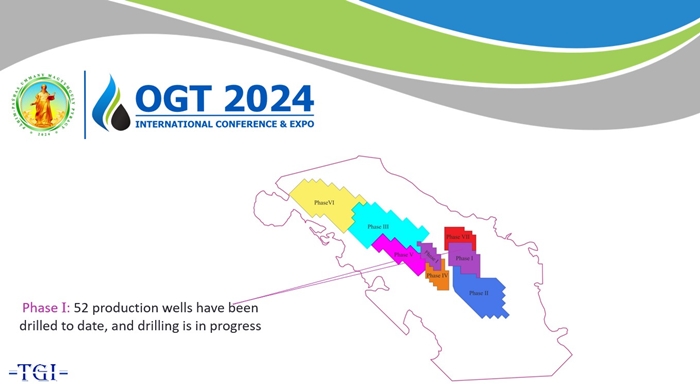This is a field with reserves of more than 20 trillion cubic meters of gas (or more than 500 trillion cubic feet) and a productive horizon stratum of over 600 meters is truly phenomenal — this is how Steven Travers, Director of the British auditing and consulting company GaffneyCline, described the Turkmen Galkynysh deposit.
Irina Luryeva, Head of the Laboratory at the Scientific Research Institute of Natural Gas of Turkmengaz Group, shared insights into the latest developments and unique characteristics of the Galkynysh field during the OGT 2024 International Oil and Gas Conference.
Here are the key points of her speech:
- Phases of development: At this stage of exploration of the Galkynysh deposit, the forecast calculations of development indicators provide for 7 Phases of development. Currently, the Phase I of field development is in pilot operation.
- Complex geological structure: The uniqueness of the Galkynysh deposit lies not only in its huge reserves and large area, but also in the fact that the gas content floor is on average more than 700 m, the depth of occurrence is more than 5000 m.
- The composition of the gas contains about 10% acidic components.
- Number of wells: The current stock of production wells includes 52 units. There are more than 10 wells in active drilling.
- High well flow rate: The average design gas flow rate is 1.5 million cubic meters per day, and the potential of the reservoir allows for a long time to operate wells with a flow rate of more than 2 million cubic meters. 3 wells of the original design provide a gas flow rate of about 3 million cubic meters per day.
- Long-term operation period: According to forecasts made jointly with GaffneyCline, the period of continuous gas extraction for each stage will be more than 30 years.
- Production potential: It is planned to achieve an annual gas production of almost 200 billion cubic meters.
The phased development strategy for the Galkynysh field enables the regulation of investment flows and the incorporation of valuable technological experience and geological data gathered from existing wells.
While significant progress has been made, there remains ample room for further technological advancements at Galkynysh.
One critical area of research is the utilization of associated gas, particularly sulfur and carbon dioxide. Scientists are exploring various options for injecting these substances into aquifers, both within the Galkynysh field itself and in nearby geological structures, as well as into depleted deposits of neighboring fields.
In this regard, the Institute is ready to discuss the experience of other companies and the solutions they have found, as well as to attract interested investors to the problem of hydrogen sulfide utilization and the use of sulfur and carbon dioxide. ///nCa, 24 October 2024
